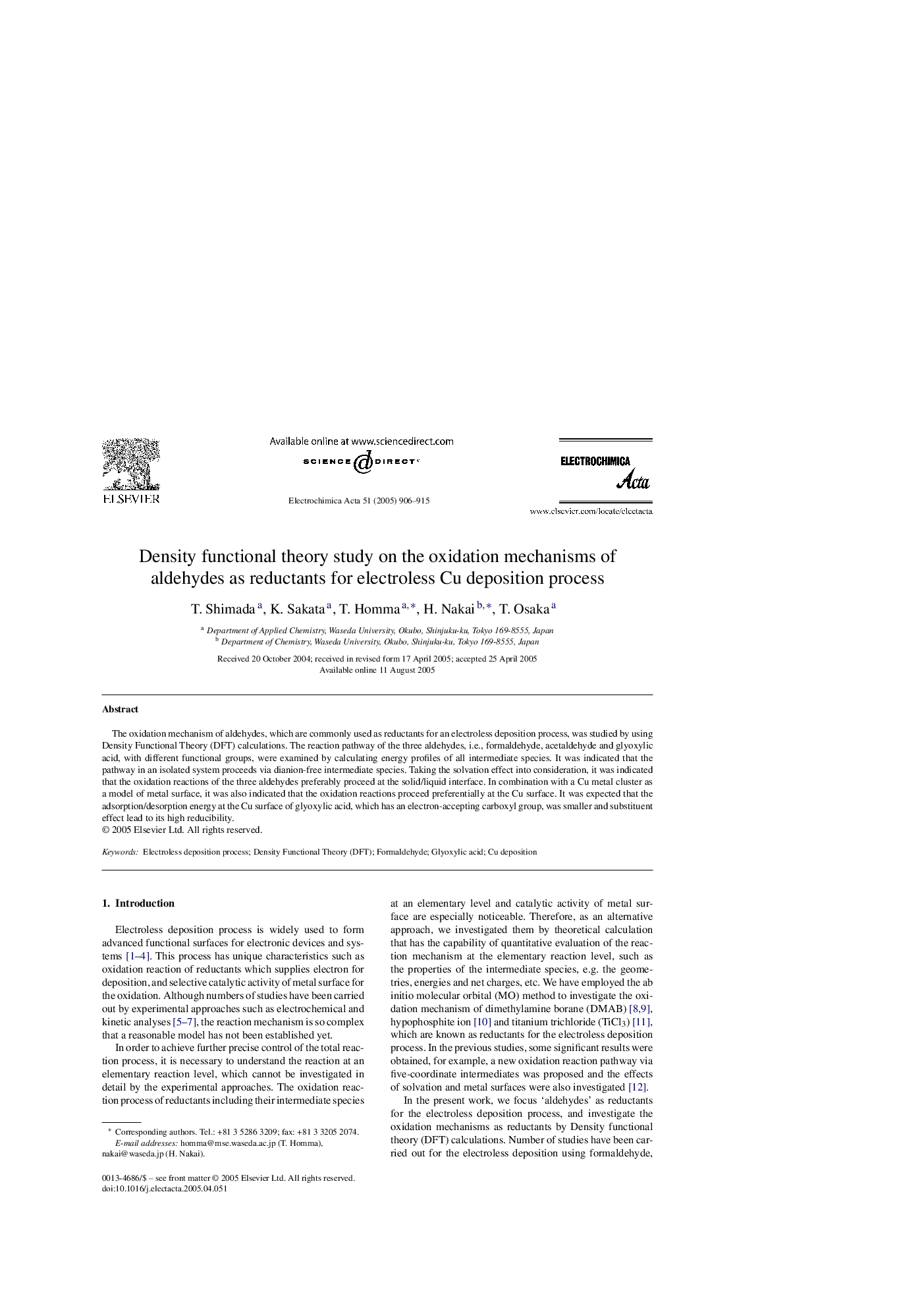| Article ID | Journal | Published Year | Pages | File Type |
|---|---|---|---|---|
| 10269405 | Electrochimica Acta | 2005 | 10 Pages |
Abstract
The oxidation mechanism of aldehydes, which are commonly used as reductants for an electroless deposition process, was studied by using Density Functional Theory (DFT) calculations. The reaction pathway of the three aldehydes, i.e., formaldehyde, acetaldehyde and glyoxylic acid, with different functional groups, were examined by calculating energy profiles of all intermediate species. It was indicated that the pathway in an isolated system proceeds via dianion-free intermediate species. Taking the solvation effect into consideration, it was indicated that the oxidation reactions of the three aldehydes preferably proceed at the solid/liquid interface. In combination with a Cu metal cluster as a model of metal surface, it was also indicated that the oxidation reactions proceed preferentially at the Cu surface. It was expected that the adsorption/desorption energy at the Cu surface of glyoxylic acid, which has an electron-accepting carboxyl group, was smaller and substituent effect lead to its high reducibility.
Related Topics
Physical Sciences and Engineering
Chemical Engineering
Chemical Engineering (General)
Authors
T. Shimada, K. Sakata, T. Homma, H. Nakai, T. Osaka,
